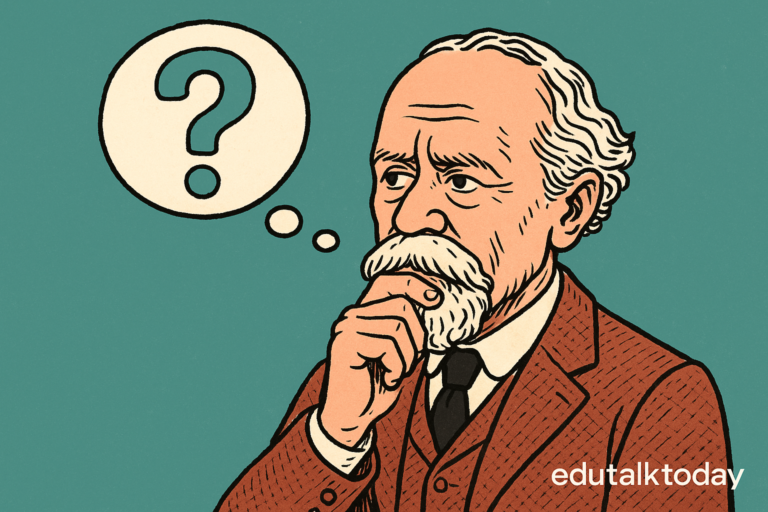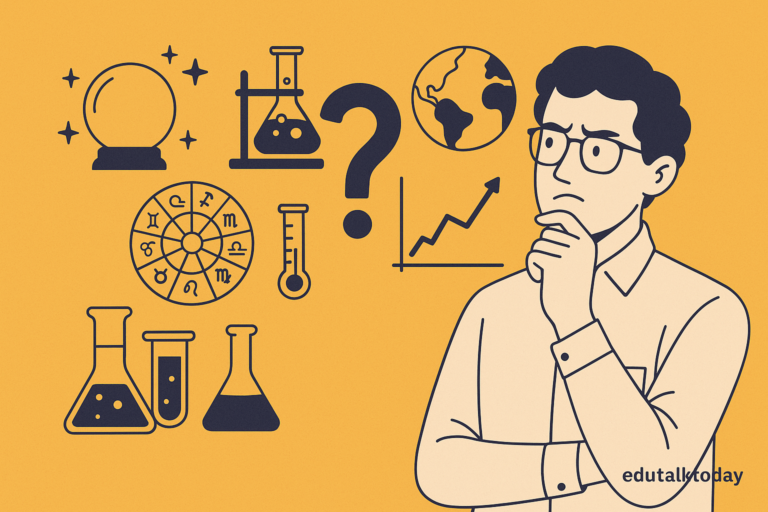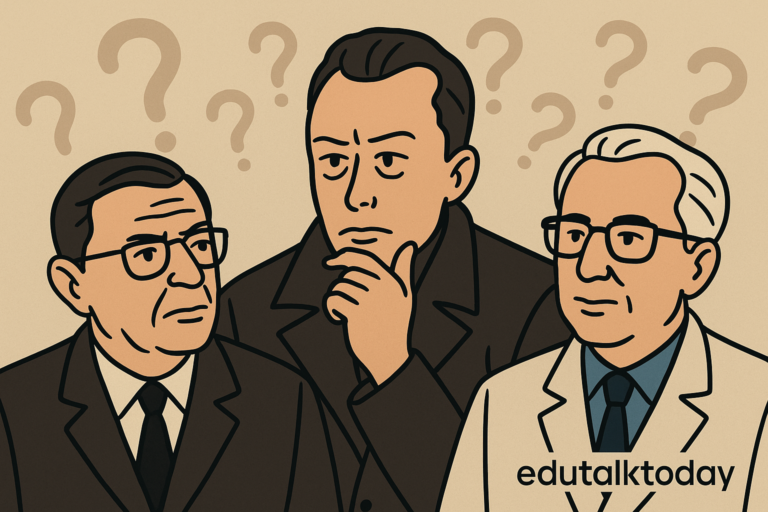How Pragmatists Redefine Truth

We all say we know what the pragmatic theory of truth is: truth is what works, what holds up in experience, what’s useful.
Peirce, James, Dewey—you’ve read them, maybe even taught them. But I want to push on something here: what if we’ve all been oversimplifying it?
Worse—what if we’ve been folding pragmatism back into the very kind of epistemic frameworks it was meant to break away from?
When you look closely, pragmatic truth isn’t just a theory about what “true” means. It’s a full-on challenge to how we understand inquiry, reliability, and even objectivity.
And Peirce and James—often lumped together—are not playing the same game.
Their differences aren’t just stylistic or emphasis-based; they reveal two very different epistemic visions.
So let’s dig in. Because if truth really is what proves itself across experience, we’ve got to ask: whose experience, and over what time frame?
Peirce vs. James—Same Words, Totally Different Ideas
Okay, here’s the thing. Peirce and James are constantly paired together in discussions of pragmatic truth, almost like a package deal.
But once you move past the slogans—truth as what works, what pays off, what’s verified—their actual theories start pulling in very different directions.
Let’s start with Peirce.
Peirce: Truth as the Ideal End of Inquiry
For Peirce, truth is what we’d get to if inquiry went on forever under perfect epistemic conditions. You’ve probably heard that line a hundred times. But what we don’t talk about enough is how deeply anti-psychological this model is. It’s not about what any one person believes today—or even what a community thinks right now.
Truth is about what we would believe at the hypothetical end of investigation, where all errors have been corrected.
This sounds abstract—and it is. But there’s a good reason behind it. Peirce wanted to preserve a kind of objectivity that wasn’t tied to any individual’s perception. He saw science as this long, self-correcting process that, over time, homes in on stable beliefs.
His “regulative ideal” of truth isn’t about utility in the everyday sense—it’s about the convergence of rational inquiry.
But here’s where it gets tricky.
Take the example of heliocentrism. Peirce would say it’s true because it’s the theory we’d arrive at after sufficient inquiry. And sure, it “works”—we can send satellites into orbit.
But for Peirce, its truth isn’t in the working; it’s in the ideal limit of scientific consensus. Pragmatism here isn’t about short-term payoff; it’s about the long-term destiny of belief under ideal conditions.
James: Truth as What We Can Rely On—Now
James, on the other hand, just isn’t playing this long-game of infinite inquiry. He’s grounded, radically empirical, and way more concerned with how truth functions in lived experience.
For James, truth is what proves itself reliable in practice, over time, for someone. That last part is key—truth is person-relative, but not in a flaky way. It’s not “true for me, not for you.” It’s more like: if a belief consistently leads to successful action and fits with the rest of what I know, then that belief is true insofar as it continues to do that.
A quick example: imagine a mountaineer roped to a cliff face. If they believe they’ll fall, they’re paralyzed. But if they believe they can make the leap, they act—and survive. That belief was true, in James’s view, because it proved itself in the action. Not later, not ideally—right now, in experience.
This is where people accuse James of being too loose, or too subjective. But that misses the point. He’s not saying any belief that helps is true. He’s saying that truth is a property of beliefs that stand up to reality over time—including social, psychological, and practical dimensions of reality.
So What’s the Real Difference?
The real split between them isn’t just about timing—it’s about what “works” even means.
- For Peirce, “what works” is about what belief survives endless testing in a rational community. It’s about truth as a kind of asymptotic realism.
- For James, “what works” is what holds up in lived, embodied, situated experience. It’s pluralistic, fallible, and contextual.
They both use “experience” and “practice,” but they load those words with totally different metaphysical assumptions. And we lose a lot when we flatten that difference.
Bottom line?
James gives us a model of truth that moves with us, that grows and adapts. Peirce gives us a kind of truth that we never quite reach, but which guides us like a lighthouse. Both are pragmatic—but they’re pointing in different directions.
And if you’ve been treating them as two sides of the same coin, you’re probably missing half the point.
Five Common Misreadings of Pragmatic Truth (That Even Experts Make)
Let’s be honest—pragmatism’s reputation in the philosophy world is a little… messy. It’s either written off as a watered-down version of realism or caricatured as “truth is whatever works today.” I’m guessing you’ve seen some of these takes before—maybe even nodded along. But when we zoom in, we find that many of the most common critiques of pragmatic truth actually miss what’s radical (and useful) about it.
So, let’s take a breather from dense exposition and unpack five persistent misreadings of the pragmatic theory of truth—even among people who know their Peirce from their James.
1. “Truth is just whatever is useful.”
This one’s the classic strawman. And sure, the pragmatic theory does link truth to usefulness—but that usefulness is specific. It’s not about comfort or convenience. It’s about what continues to work under pressure, in inquiry, across contexts, and over time.
Take James’s view: a belief is true insofar as it proves itself by helping us navigate experience without contradiction or breakdown. Think of maps—not just metaphorically, but literally. A map is “true” if it gets you where you’re going. But only so long as it does. When roads change or borders shift, the map’s truth becomes obsolete. It’s not false because it was never true—it’s false because reality changed, and the map didn’t.
So yes, it’s about what’s useful—but not in the shallow, short-term sense. It’s about experiential resilience, not just practicality.
2. “It’s just relativism in disguise.”
You’ve heard this one: “If truth is just what works for you, then anything can be true, right?” But no—this misses a critical point. Pragmatic truth isn’t individualistic; it’s intersubjective.
Pragmatists don’t say “truth is what I feel.” They say truth is what works in experience within a world that resists us, checks our assumptions, and sometimes tells us “no.” It’s about beliefs surviving friction with reality—not just floating freely in opinion space.
Even James—often painted as the relativist of the crew—rejects pure subjectivism. He insists that truth is constrained by what he calls “sensible experience.” You can’t just believe you can breathe underwater without consequences.
So pragmatic truth is fallible and provisional, yes—but anchored, not arbitrary.
3. “Pragmatism denies correspondence.”
Not quite. What pragmatists deny is a static, one-to-one picture of correspondence. They don’t throw out the idea of belief tracking reality—they just redefine how that tracking happens.
Instead of thinking of beliefs as “matching” a reality that’s out there like puzzle pieces, pragmatists ask: does the belief function successfully in the contexts where reality shows up?
Think of a thermostat. It doesn’t “correspond” to temperature by picturing it—it tracks it through regulation. Likewise, beliefs are true when they successfully co-regulate our behavior with the world.
Peirce’s “ideal limit of inquiry” is a kind of asymptotic correspondence: the belief we’d arrive at when all distortions are gone. And James doesn’t throw out correspondence—he just infuses it with consequences.
So it’s not anti-correspondence—it’s dynamic correspondence.
4. “Truth changes with opinion.”
This is more subtle but still wrong. Pragmatists absolutely separate belief from truth. Just because a belief works now doesn’t mean it’s immune to future revision. Truth isn’t about consensus or confidence—it’s about long-term verification through consequences.
Take the evolution of disease theory. People used to “believe” in humors or miasma. Those theories worked—up to a point. But over time, they broke down under better evidence and practice. Germ theory replaced them not because more people agreed, but because it explained more, predicted better, and saved lives.
James’s truth is always provisional, but it’s not volatile. Beliefs are true so long as they endure. The minute they fail, they lose their truth-status. It’s a performance-based model, not an opinion poll.
5. “Peirce and James are just stylistic variants.”
Nope. This is the big one. And it’s honestly one of the most frustrating oversimplifications I hear, especially in textbooks and undergrad lectures.
Peirce and James use similar language, but their underlying projects are really different. Peirce is building a logic of inquiry grounded in semiotics and community-driven convergence. James is developing a psychology of belief, grounded in embodied experience, pluralism, and immediate consequences.
Here’s the difference in a nutshell:
- Peirce’s truth = the belief we’d settle on in the ideal long run of rational inquiry.
- James’s truth = the belief that helps us now, so long as it remains coherent and effective in lived experience.
Treating them as twins erases an entire philosophical tension. Their divergence is exactly what makes pragmatism rich.
James brings existential urgency to a theory that could otherwise float too far above lived experience. Peirce anchors James’s openness with a regulative ideal that prevents drift.
These five misreadings all stem from the same error: treating pragmatism like it’s just a soft version of realism or a proto-relativism.
But it’s neither. It’s a distinct third path that forces us to rethink what “truth” can even mean in a world of change, context, and fallibility.
And once you stop flattening it? You start seeing how flexible, radical, and surprisingly modern this theory actually is.
Truth That Grows Over Time—Why Pragmatism Rejects Finality
Here’s the question that pragmatic truth keeps forcing on us: What if truth isn’t a property something has, but a role something plays—and plays well over time?
That idea alone turns the whole epistemic game upside down.
Truth as an Ongoing Performance, Not a Static Property
Let’s break this open. Most traditional theories of truth—whether correspondence, coherence, or deflationary—treat truth as something fixed. A belief is either true or false. End of story.
But in pragmatism, truth isn’t a label—it’s a status that gets earned and re-earned through experience. It’s tied to consequences, adjustments, and durability. James says truth “happens to an idea.” That’s not just poetic. It’s radically temporal.
For example, think of scientific theories. Newtonian physics was “true” for a long time because it worked—until it didn’t. Then came Einstein. And maybe one day we’ll replace relativity with something else. But that doesn’t make Newton’s theory a lie. It means it was true within the limits of available experience—and then outlived its usefulness.
So truth doesn’t die. It evolves.
A Case in Point: Vaccines and Public Trust
Look at public health. A vaccine’s effectiveness is initially judged through trials. But its truth-status—whether it works, whether it’s safe—is constantly renegotiated through data, experience, and policy feedback.
A vaccine might start with provisional truth (based on early results), then gain credibility through mass effectiveness, and then lose some of that standing if side effects emerge. That’s not truth failing—it’s truth doing what truth does in a pragmatist frame: adjust, recalibrate, survive scrutiny.
You can’t fix truth once and for all. You have to keep checking. That’s not weakness—it’s epistemic responsibility.
So What Does This Mean for Inquiry?
If truth isn’t final, then inquiry never ends. And that’s the point.
Peirce saw inquiry as an asymptotic process. We don’t get to the truth—we aim at it. That goal shapes how we investigate, refine, and hold our beliefs. It’s not relativism; it’s directional realism.
And James?
He reminds us that we can’t wait for the perfect answer. We live in the meantime. His model gives us a way to act with conviction without pretending that conviction equals certainty.
That’s huge. Because in fields like ethics, politics, climate science, and AI—where the stakes are high and facts are fuzzy—we need a model of truth that moves with us. Finality isn’t just unrealistic—it’s dangerous.
Living with Provisional Truths
So what does pragmatic truth demand of us?
- Intellectual humility. You have to be okay with “true for now.”
- Commitment to revision. Updating is a feature, not a flaw.
- Context sensitivity. What’s true in one domain may not hold in another.
- A long view. Truth emerges over time, not all at once.
Pragmatism invites us to see truth not as a destination but as a kind of epistemic craftsmanship. You don’t find it. You shape it. And then you see if it holds.
Final Thoughts
If you’ve made it this far, I hope one thing’s clear: pragmatic truth isn’t about abandoning rigor—it’s about relocating it. Away from static definitions and into the flow of inquiry, practice, and experience.
James gave us a truth we can use. Peirce gave us a truth we can pursue. And together, they gave us a challenge: can we live without final answers and still care deeply about getting it right?
That’s the heart of it. Not “true because it works”—but true because it keeps working, keeps proving, keeps mattering.
And honestly? That’s a truth I can live with.





